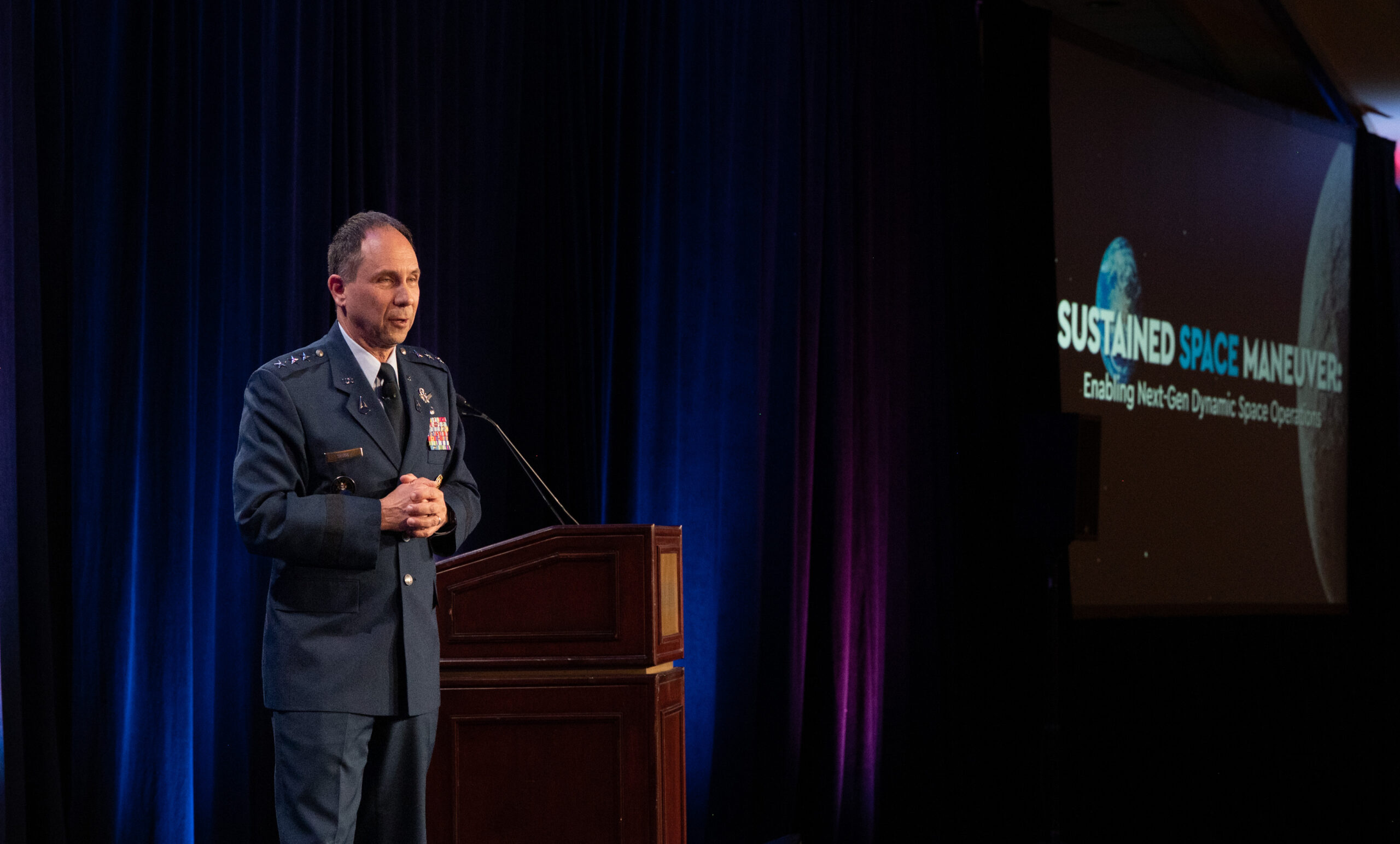We find ourselves amid great societal transformation, yet few are aware of what is truly driving it.
Most of the developed world lives in an unprecedented era of convenience enabled by rapid access to global goods, services and information. Our modern way of life — from the timing for ATMs, streetlights and Wall Street trading to our connectedness through social media and instant gratification through Uber eats — is overwhelmingly due to the services provided by space (and those largely enabled by U.S. military innovation).
But, this is only the beginning. While Hollywood has yet to deliver on hoverboards and flying cars, your national security, commercial and civil space sectors are converging in ways never seen before.
Ladies and Gentlemen, welcome to the Third Space age.
What lies ahead is a return of humankind to the moon — to stay this time — as well as commercially built space stations, on-orbit servicing infrastructure, and routine space tourism. And, as much as we — our national security space agencies included — want to ensure space is reserved for peaceful uses and further “supra global” economic development, mischief in the domain has already begun.
Indeed, the most significant development of the Third Space Age is the emergence and advancement of threats and potential for conflict extending into the domain.
In recent years, both Beijing and Moscow have demonstrated anti-satellite capabilities ranging from diverse jamming systems to kinetic kill platforms – and they continue to advance these capabilities.
This is an unwelcome development, but it should also not come as a surprise. No domain in human history — land, sea, air, cyber — has been immune from threats once advantages and capabilities in those domains reached a point where they could be useful, even decisive, to economic or military endeavors.
That is where U.S. Space Command comes in. We were established four years ago, on August 29, 2019, to protect and defend within the space domain against such threats – to ensure the continued delivery of space services to terrestrial domains, to guarantee safety of astronauts transiting to the International Space Station and eventually to the moon, and to underwrite the confidence of the U.S. industrial base to continue to develop the domain.
Commercial sector taking the lead
For U.S. Space Command to protect the domain from nefarious activity, the Third Space Age and its accompanying convergence of space sectors requires the global community to evolve how we all view space and expand our abilities to operate within the domain.
In addition to the appearance of threats, another defining characteristic of the Third Space Age is how the commercial sector has taken the lead on innovation and creativity, distinct from the First and Second Space ages.
The First Space age coincided with the Cold War, sparked by the launch of the Soviet Union’s Sputnik in 1957, and ended with the disintegration of the Soviet Union in 1991. In this era, space activities were dominated by the U.S. national security sector, which developed advanced strategic surveillance and reconnaissance capabilities, unmatched even today.
With the fall of the Soviet Union, we entered the Second Space Age, where NASA made human spaceflight to low Earth orbit routine. In parallel efforts, the commercial space industry developed its first large-scale space-based capabilities as it pursued markets for cheaper global communications, Direct TV, and applications for the civilian government-provided Global Positioning System (GPS) signals, which are now inseparably infused into the lives of the global public.
In the national security space sector, activities focused on delivering space capabilities down to the tactical level, with greater precision, timeliness, and scale. Yet, all of this occurred in a space domain that was, at the time, benign, and void of threat.
That is no longer the case.
Now, as the commercial sector takes the lead on developing digital age technology and capabilities in this Third Space Age, the national security sector will become a demanding customer.
To ensure we can protect the domain, the national security sector calls on the industrial base to challenge the way we have built satellites — expensive, and with long life cycles and limited fuel — and to reimagine how we can maneuver in the domain.
The national security sector requires new in-domain capabilities, developed for space domain awareness, among other mission area needs, not focused just on providing services terrestrially, but also looking within and across the broader Earth-moon system, and beyond.
As industry continues to ask if the national security sector will buoy the industrial base until the market is ripe for investing in new technology and new concepts, our response is “This is the Third Space Age!”
While the national security sector will be a demanding customer, we are not the only customer. As humankind expands its presence in space, and as more players reach further into the stars, there will be a need for space-based sensors, communication relays to and from the moon, on-orbit refueling and all that might be needed for space ports and cargo staging.
Perhaps the most remarkable characteristic of this Third Space Age is the degree to which all space sectors and actors have become inexorably interdependent upon one another. Civil space needs commercial solutions and national security partnership. Commercial space needs security mechanisms to ensure safety and stability in the domain. And national security space simply cannot succeed on its own.
We are all in it together, across all sectors and all nations.
U.S. Space Force Lt. Gen. John Shaw is the United States Space Command deputy commander. He is a career space operator and astronautical engineer and has authored several works on space power and national security space issues. The views expressed are those of the author and do not reflect the official policy or position of the U.S. Space Force, Department of Defense or the U.S. government.
